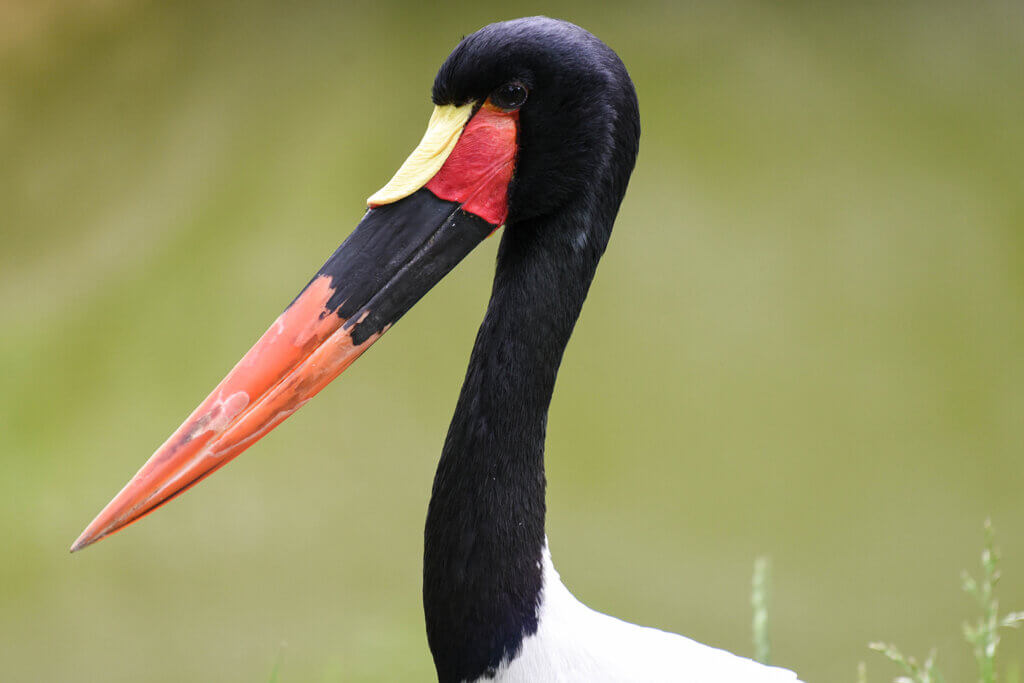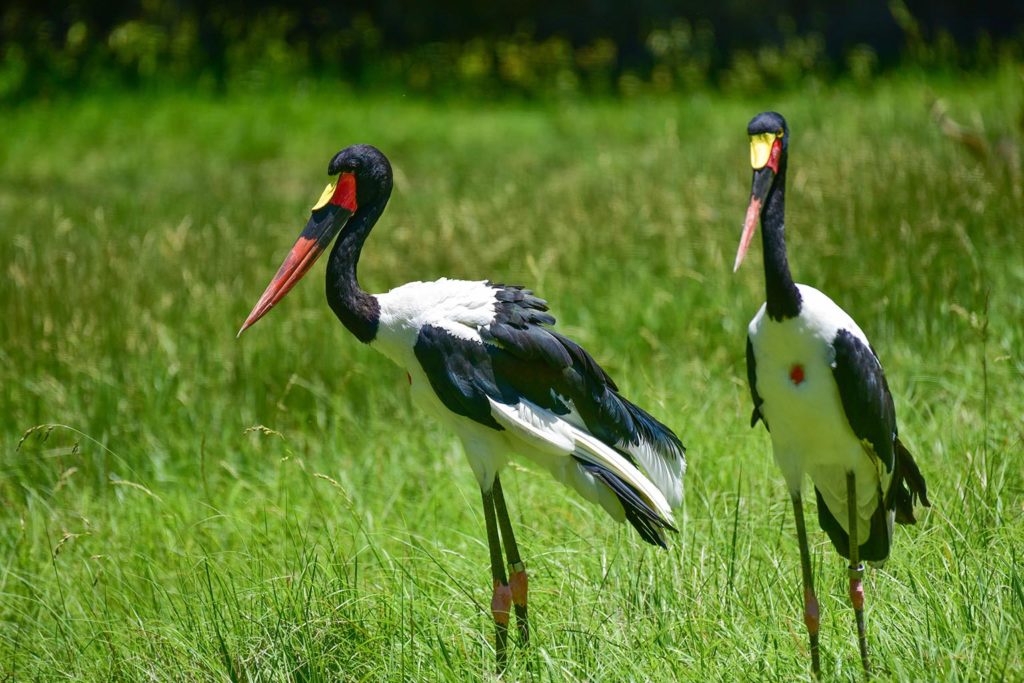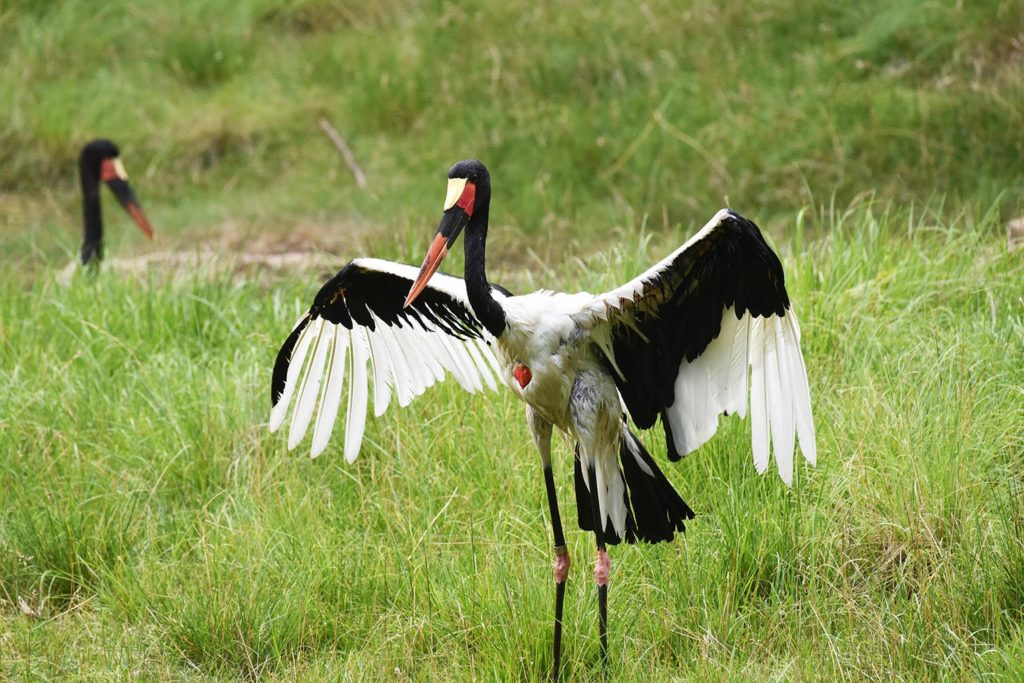Overview
“Where I live”
Saddle-billed storks live throughout tropical Africa south of the Sahara, mainly in open or semi-arid country near sources of water. They forage and nest along rivers, lake shores, flood plains, and swamps. They can be seen as you walk along the African Journey Boardwalk at the Maryland Zoo.
“How I live there”
Like most storks, saddle-billed storks are mainly solitary birds. If they gather in groups at all, the groups are small. They forage alone or in pairs, and pairs nest alone. Pairs are territorial and will chase other pairs out of their home range.
Saddle-billed storks feed primarily on fish, but also on frogs, small reptiles, small mammals, some mollusks, and probably insects. They stand very still in open water or walk about in reeds and shallow water, stabbing repeatedly and sometimes trying to stir up prey with their feet. They swallow their prey whole and drink water just after swallowing.
These birds are normally shy and wary but can become quite tame when acclimated (to vehicles in national parks, for example.)
“Making my mark”
Saddle-billed storks are large and strikingly colored birds, with a wingspan of up to 9 feet!
“What eats me”
Eggs and chicks may be vulnerable to various types of predator, but adult saddle-billed storks are large enough, with imposing enough beaks and legs, not to be preyed upon often.
Raising Young
Pairs are probably bonded for life. They build nests singly, not in colonies. They construct a platform of sticks in trees (usually thorny acacias) near water. Pairs feed together near their nests. Females lay anywhere from 1 to 5 eggs, usually 2 to 3. The pair takes turns sitting on the eggs during the incubation period, which is estimated at 30-35 days.
Parent birds care for the chicks for about the first 45 days of life. They regurgitate food into the nest for the chicks and dribble water on them. As the chicks get older, they may take fish directly from a parent’s beak. At about 3.5 months, the chicks are largely independent. They fledge somewhere between 70 and 100 days.
Conservation
Saddle-billed storks are widespread throughout tropical Africa. Their population is probably stable, but they are not considered common. The IUCN, the world’s largest conservation organization, lists them as a species of least concern.
Taxonomy
- Kingdom: Animalia
- Phylum: Chordata
- Subphylum: Vertebrata
- Class: Aves
- Order: Ciconiiformes
- Family: Ciconiidae
- Genera: Ephippiorhynchus
- Species: senegalensis




